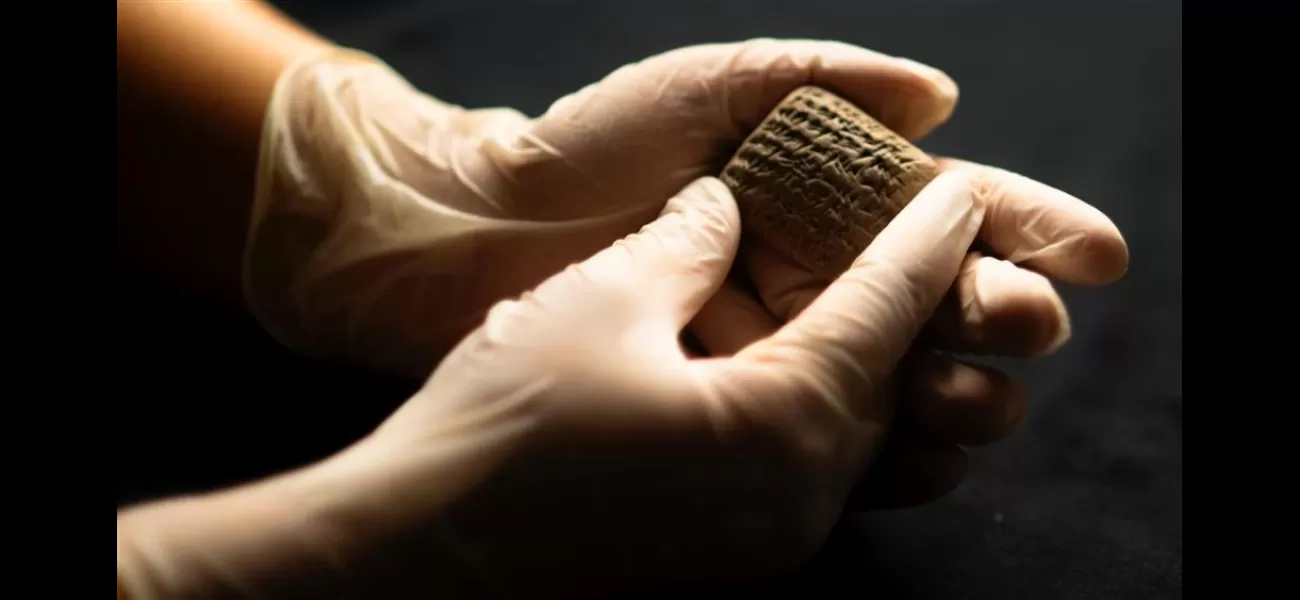Ancient clay tablet reveals unexpected translation after 3500 years.
Small 28g tablet bears one of humanity's oldest written languages.
August 1st 2024.

A 3500-year-old clay tablet has recently been discovered in Turkey and has been the subject of much excitement and wonder. Covered in ancient writing, this small tablet measures just 4.2cm by 3.5cm and is 1.6cm thick. The tablet, weighing in at 27.85 grams, was uncovered during restoration efforts after an earthquake struck the historic city of Alalakh.
Upon further examination, it was revealed that the tablet was inscribed with a form of Akkadian cuneiform writing - one of the earliest known written human languages. This discovery has shed new light on the development of written language and its significance in ancient civilizations.
But perhaps the most surprising revelation about this tablet is its content. Translated by Turkish researchers, the tablet has been identified as a shopping list. Yes, you read that correctly - a shopping list from 3500 years ago. The lines on the tablet detail the purchase of a "large" quantity of wooden tables, chairs, and stools - leading some to joke that it may have been a trip to a Bronze Age version of Ikea.
In a statement translated from Turkish, culture and tourism minister Mehmet Ersoy expressed his belief that this tablet, weighing a mere 28 grams, will provide valuable insight into the economic and political systems of the Late Bronze Age. This is a significant find for researchers and historians, as it offers a glimpse into the daily life and activities of these ancient civilizations.
The city of Alalakh itself has a rich history, dating back to the third millennium BCE. At one point, it was the capital of the lost kingdom of Mukis and was a bustling urban center during the Late Bronze Age. However, it is believed to have been abandoned around 600 BCE and has since become an important archaeological site.
This discovery serves as a reminder of the enduring significance of ancient civilizations and the importance of preserving and studying their artifacts. It also serves as a reminder that even the most mundane objects, such as a shopping list, can offer valuable insights into the past. As we continue to uncover and decipher ancient texts and artifacts, we gain a deeper understanding of our shared human history.
Upon further examination, it was revealed that the tablet was inscribed with a form of Akkadian cuneiform writing - one of the earliest known written human languages. This discovery has shed new light on the development of written language and its significance in ancient civilizations.
But perhaps the most surprising revelation about this tablet is its content. Translated by Turkish researchers, the tablet has been identified as a shopping list. Yes, you read that correctly - a shopping list from 3500 years ago. The lines on the tablet detail the purchase of a "large" quantity of wooden tables, chairs, and stools - leading some to joke that it may have been a trip to a Bronze Age version of Ikea.
In a statement translated from Turkish, culture and tourism minister Mehmet Ersoy expressed his belief that this tablet, weighing a mere 28 grams, will provide valuable insight into the economic and political systems of the Late Bronze Age. This is a significant find for researchers and historians, as it offers a glimpse into the daily life and activities of these ancient civilizations.
The city of Alalakh itself has a rich history, dating back to the third millennium BCE. At one point, it was the capital of the lost kingdom of Mukis and was a bustling urban center during the Late Bronze Age. However, it is believed to have been abandoned around 600 BCE and has since become an important archaeological site.
This discovery serves as a reminder of the enduring significance of ancient civilizations and the importance of preserving and studying their artifacts. It also serves as a reminder that even the most mundane objects, such as a shopping list, can offer valuable insights into the past. As we continue to uncover and decipher ancient texts and artifacts, we gain a deeper understanding of our shared human history.
[This article has been trending online recently and has been generated with AI. Your feed is customized.]
[Generative AI is experimental.]
0
0
Submit Comment





